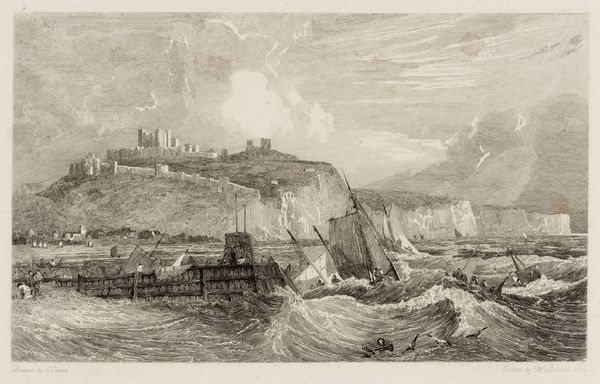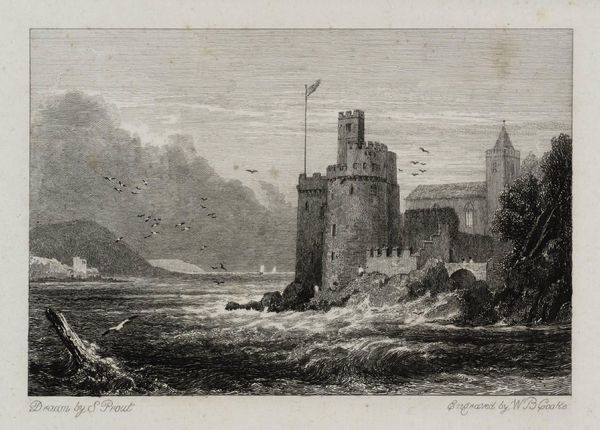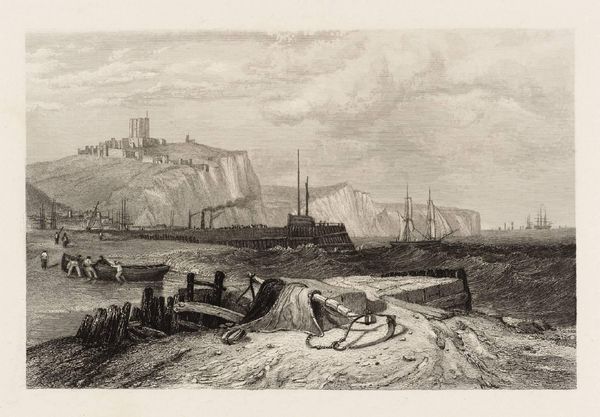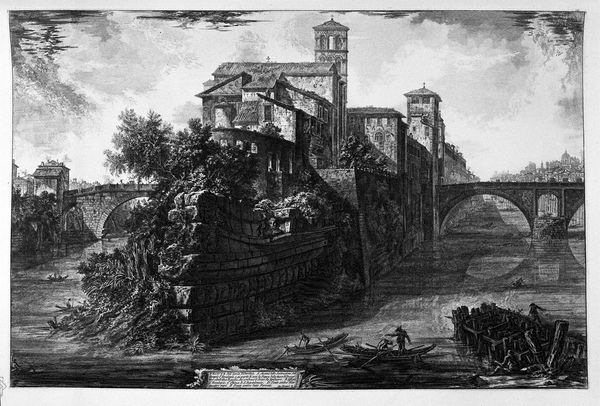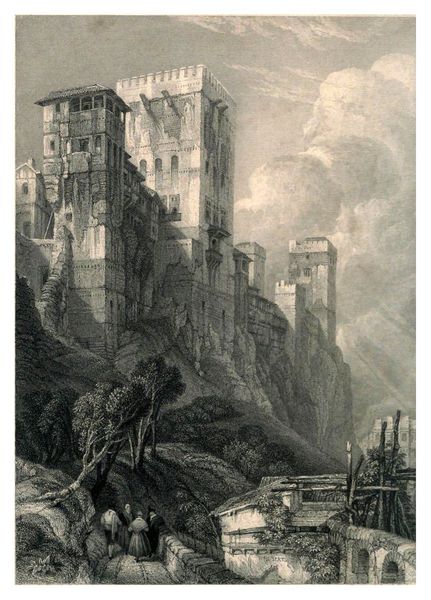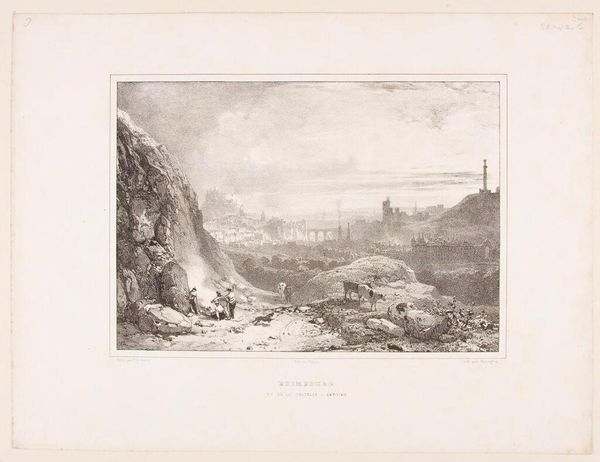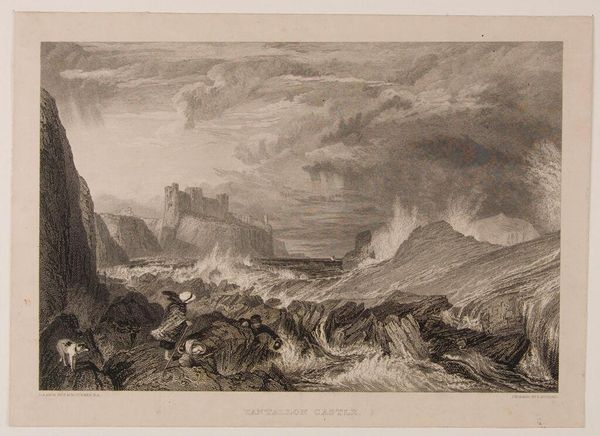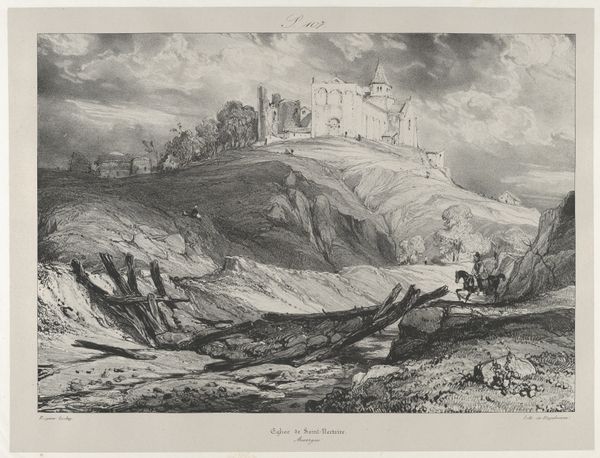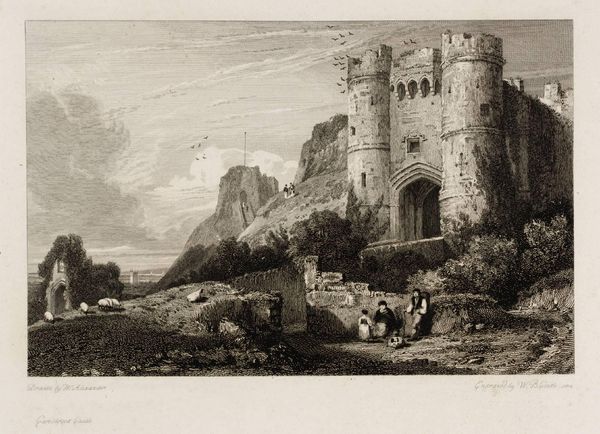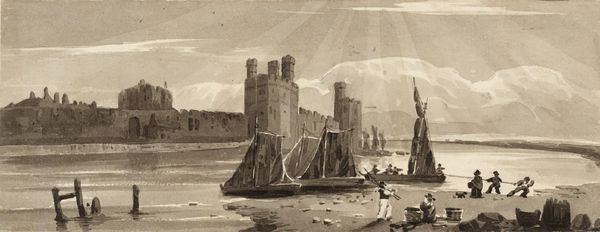
Peel Castle, Isle of Man, engraving by William Miller after Leitch 1845
0:00
0:00
drawing, print, photography, engraving
#
drawing
# print
#
landscape
#
nature
#
photography
#
romanticism
#
black and white
#
monochrome photography
#
monochrome
#
engraving
Copyright: Public domain
Curator: This is "Peel Castle, Isle of Man, engraving by William Miller after Leitch," dating back to 1845. Editor: My first impression is one of stark grandeur, a romantic vision of resilience against a tumultuous sea. The black and white amplifies the drama. Curator: Absolutely. Castles carry potent symbolic weight—defence, power, history. Perched on that craggy isle, Peel Castle becomes an icon, imbued with tales of Viking origins and Scottish struggles for dominance. It represents centuries of shifting cultural landscapes. Editor: The engraver, Miller, working after Leitch, really captures that tension. Look at the way the light hits the ruins – highlighting not just strength, but vulnerability, too. It seems less about the assertion of power and more about the legacy of conflict imprinted on the land and the psyche. It speaks to ideas of national identity but also its precarity, doesn't it? Curator: Precisely! Ruins signify time's relentless passage and how every structure—every symbol—is ultimately transient. And, the monochrome adds another layer—simplifying everything to stark oppositions: light and dark, safety and danger, past and present. It becomes almost archetypal. Editor: I'm also drawn to the people in the foreground, they are minute but are grounded and tell a story of those who persist under any circumstances. Their presence anchors the grand vista. The figures serve as a reminder that history is not some remote occurrence; it has continuous impacts on human beings. Curator: A vital observation. Their everyday activities taking place at the backdrop of history show that our ancestors and contemporary figures find resilience even when shadowed by the ruins of power, isn't it? These are constant threads throughout civilization, reminding us about the interconnectedness of history and our shared human journey through trials and triumphs. Editor: Yes. Looking at it through that lens changes everything. We see history not as something static, but as something still in the making, something we're all actively participating in, as our stories echo our predecessors, our past continues to guide our present actions. Curator: A wonderful sentiment to leave on, a final layer on this captivating image. Editor: It invites to recognize both the powerful narratives shaped by history and those woven by generations of real people.
Comments
No comments
Be the first to comment and join the conversation on the ultimate creative platform.

